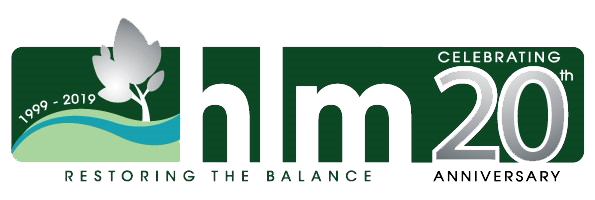At Hunter Land Management, we offer environmentally sustainable erosion control alternatives that differ from conventional rock and concrete flumes. Riparian and erosion management are areas of our business that we are passionate about. If you’re not sure exactly why erosion control is necessary, or what erosion even is, here are some basics about erosion that everyone should know.
What is erosion? Erosion can be defined as the process of gradual destruction/diminishing of something. In the context of land management, the erosion of soil or dirt can occur due to water, wind or other natural agents, as well as human farming activities.
Soil erosion is a common issue. It’s a naturally occurring process impacting all landforms. It is the wearing away of the topsoil by natural forces like wind and water. Regardless of the specific cause, there are three distinctive actions that take place beginning with detachment of the soil, followed by movement and then deposition. It can be a slow process, and often continues relatively unseen until the damage is noticeable. Alternatively, it can also be a rapid process causing a serious loss of topsoil, a reduction in cropland productivity, and significant water pollution to neighbouring bodies such as wetlands and lakes. Other conditions that can accelerate the progression of soil erosion include; soil compaction, loss of soil structure, low organic matter, poor internal drainage, soil acidity problems and salinization.
Water Erosion
Erosion caused by water occurs slowly as the soil is removed from the land by water and then relocated somewhere else. Rivers, streams, rain and floods can all cause water erosion, and while rain won’t carry the soil far, rivers can. The topsoil is removed first, and as that’s the part most rich in nutrients, soil erosion has a profound impact on farming. It can also affect the natural appearance of any landscape.
Some of the different types of water erosion include; sheet erosion, rill erosion and gully erosion.
Sheet erosion occurs when soil is uniformly removed in thin layers due to raindrops and general water flow over land. This can be a slow process and go unnoticed for a lengthy period of time.
Rill erosion is soil removal via concentrated water flow through small streams. A detachment occurs in the rill when the sediment flow is below the load amount that can be transported, i.e. the flow exceeds the resistance of the soil to the detachment.
Gully erosion happens when soil is removed along drainage lines by surface runoff. The erosion will force continued movement of the gully until intervention takes place.
Wind Erosion
The same as water erosion, wind erosion occurs as soil is moved only this time wind power is the culprit. It can be caused by light winds slowly relocating soil particles along the earth’s surface, or strong winds shifting bigger volumes of particles in the air through a dust storm. Most common in coastal and beach areas with sand dunes, as well as deserts, wind erosion can occur in just about any agricultural setting given the right circumstances. Just like water erosion can cause physical damage and impact farming, wind erosion can do the same, as well as present health consequences due to airborne dust as it affects conditions like asthma and respiratory illness.
At Hunter Land Management, we offer erosion control as one of our services. We can provide:
- River, creek, gully, sheet, and rill erosion, and all scales and types of riparian management.
- Remediation techniques of all types, including LWD and erosion control construction techniques, such as sediment basin design and soil loss calculations as outlined in “The Blue Book”, along with erosion control products like geotextile, jute matting and hydromulching.
- Design of erosion control structures using computer programs, such as Geomorphic Assessor and RAINER.
- Design and construction of all types of structures, including supervision by our experienced earth moving subcontractors through the construction stage.
- Liaison with Catchment Management Authorities (and other government agencies) in regards to funding applications and permits.
- Floculation of sediment dams and installation of sediment fencing.
If you’d like to know more about erosion, its impact on land management, or you require erosion control or riparian management services, please feel free to contact the team at HLM on 0412 404 499.

